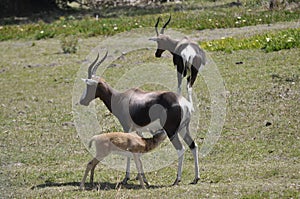- Stock Photography: THE IMPALA by Kluelani
- Price: 1$
- Size Facebook: 1702 x 630 px
- Size Twitter: 1500 x 500 px
- Size LinkedIn: 1128 x 191 px
More Facebook, Twitter and LinkedIn Cover Photos
Cover photo info
- Photo title: The Impala
- Author: Kluelani
- Cover photo description:
- The impala /ɪmˈpÉ‘ËÂlÉ™, -ˈpælÉ™/; Aepyceros melampus is a medium-sized antelope found in eastern and southern Africa. The sole member of the genus Aepyceros, it was first described to European audiences by German zoologist Hinrich Lichtenstein in 1812. Two subspecies are recognisedâ€â€the common impala, and the larger and darker black-faced impala. The impala reaches 70–92 centimetres 28–36 inches at the shoulder and weighs 40–76 kg 88–168 lb. It features a glossy, reddish brown coat. The male`s slender, lyre-shaped horns are 45–92 centimetres 18–36 inches long. Active mainly during the day, the impala may be gregarious or territorial depending upon the climate and geography. Three distinct social groups can be observed: the territorial males, bachelor herds and female herds. The impala is known for two characteristic leaps that constitute an anti-predator strategy. Browsers as well as grazers, impala feed on monocots, dicots, forbs, fruits and acacia pods whenever available. An annual, three-week-long rut takes place toward the end of the wet season, typically in May. Rutting males fight over dominance, and the victorious male courts female in oestrus. Gestation lasts six to seven months, following which a single calf is born and immediately concealed in cover. Calves are suckled for four to six months; young malesâ€â€forced out of the all-female groupsâ€â€join bachelor herds, while females may stay back.
- Image ID:131400486
- Views:8
- Downloads:0
Keywords for Facebook, Twitter and LinkedIn timeline photos
000
11she
1950
1974
1st
2018
africa
african
all
amy
animal
area
around
beetle
building
built
cape
car
city
clean
color
day
elizabeth
event
impala
kewertjie
kwamma
living
manufactured
nonwhite
park
port
uitenhage
variety
volkswagen














